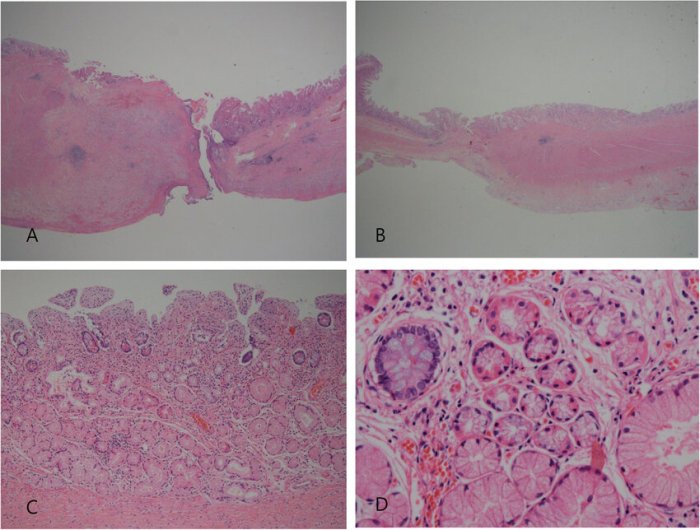Enterorrhaphy for perforated ulcer small intestine single perforation – Enterorrhaphy for perforated ulcer in the small intestine, a surgical procedure to repair a single perforation, offers unique advantages and considerations. This comprehensive guide delves into the indications, surgical techniques, postoperative care, outcomes, and special considerations associated with this procedure, providing a thorough understanding for healthcare professionals.
The content of the second paragraph that provides descriptive and clear information about the topic
Enterorrhaphy for Perforated Ulcer in Small Intestine
Single Perforation
Single Perforation

Enterorrhaphy is a surgical procedure that involves repairing a perforation in the small intestine. It is commonly used in the management of perforated ulcer, which is a hole in the lining of the small intestine caused by the erosion of gastric acid and pepsin.
Enterorrhaphy offers several advantages over other surgical techniques, including its simplicity, effectiveness, and relatively low risk of complications. However, it is important to note that the choice of surgical technique depends on the specific circumstances of each patient.
Advantages of Enterorrhaphy
- Simple and straightforward procedure
- Effective in repairing small perforations
- Low risk of complications
- Can be performed laparoscopically
Disadvantages of Enterorrhaphy
- Not suitable for large or multiple perforations
- May lead to narrowing of the intestine if the suture is too tight
Surgical Technique
The surgical technique for enterorrhaphy involves the following steps:
- Exploration:The abdomen is opened and the perforation is identified.
- Debridement:The edges of the perforation are cleaned and any necrotic tissue is removed.
- Suture placement:The perforation is closed using a series of interrupted or continuous sutures. The sutures are placed in a full-thickness manner, including both the muscularis and serosal layers.
- Omental patch:In some cases, an omental patch may be placed over the suture line to reinforce the repair.
- Closure:The abdomen is closed in layers.
The type of suture material used for enterorrhaphy depends on the surgeon’s preference and the specific circumstances of the patient. Absorbable sutures are typically used, such as polyglactin or polydioxanone.
Postoperative Care and Management
After enterorrhaphy, patients are typically placed on a clear liquid diet for a few days. The diet is gradually advanced to a soft diet and then a regular diet as tolerated.
Patients are also given antibiotics to prevent infection. The length of antibiotic therapy depends on the severity of the perforation and the patient’s overall health status.
Patients are monitored closely for signs of complications, such as abdominal pain, fever, or sepsis. If any complications develop, prompt medical attention is necessary.
Outcomes and Prognosis, Enterorrhaphy for perforated ulcer small intestine single perforation
The outcomes of enterorrhaphy for perforated ulcer in the small intestine are generally good. Most patients recover fully and have no long-term complications.
The prognosis is better for patients who have a single, small perforation and who are otherwise healthy. The prognosis is worse for patients who have multiple or large perforations, or who have other comorbid conditions.
The overall mortality rate for enterorrhaphy for perforated ulcer in the small intestine is less than 5%.
Special Considerations
Enterorrhaphy may be more challenging in patients with comorbid conditions, such as diabetes or immunosuppression. These patients may have a higher risk of complications, such as wound infection or dehiscence.
Laparoscopic enterorrhaphy is a minimally invasive technique that can be used to repair perforated ulcers in the small intestine. Laparoscopic enterorrhaphy has the advantages of being less invasive and causing less pain than open surgery. However, it is more technically demanding and may not be suitable for all patients.
Popular Questions: Enterorrhaphy For Perforated Ulcer Small Intestine Single Perforation
What are the indications for enterorrhaphy in perforated ulcer in the small intestine?
Enterorrhaphy is indicated in patients with a single perforation in the small intestine caused by a perforated ulcer.
What are the advantages of enterorrhaphy compared to other surgical techniques?
Enterorrhaphy offers advantages such as preserving intestinal length, minimizing the risk of adhesions, and allowing for early oral feeding.
What are the potential complications of enterorrhaphy?
Potential complications include bleeding, infection, anastomotic leakage, and stricture formation.

